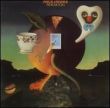| madman3123 |
|
28 Oct 2008 09:41 | Quote |
Joined: 08 May 2008 United Kingdom  Karma Karma: 1 
|
ok im writing a song, i've got lyrics and im working on the guitar
now while strumming and singing i went from a Cadd9 to a Cmaj7 to a Gmaj then to a Aminor
but im wondering
is going from one C chord to another good musically
or is it unexciting idiotic and well just not done?
|
| JoeDalton |
|
28 Oct 2008 09:48 | Quote |
Joined: 15 Oct 2008 Karma: 1 
|
Haha, first off all, never concern yourself with something like that if it sounds good to you.
Secondly there is no problem with it whatsoever aside from the fact that when playing over it to keep in mind there is a scale change and that it's C9 not Cadd9 the add is implied in the 9. |
| madman3123 |
|
28 Oct 2008 09:52 | Quote |
Joined: 08 May 2008 United Kingdom  Karma Karma: 1 
|
oh ok its just the chord machine said...
never mind lol
thanks i just wanna make sure my ears arnt rejoicing over nil |
| JoeDalton |
|
28 Oct 2008 10:08 | Quote |
Joined: 15 Oct 2008 Karma: 1 
|
Hehe, machines blow, anyway the add would be the second but in case of 7th chords we like to shorten it to their combined worth, 9, 11, 13. So if you make it add9, it would be like telling us to play the second twice.
Musicians are lazy, to prove this, the repeat symbol is a german symbol for lazy.
Also the concept of changing chords in the same root is well celebrated. A popular concept for instance is a running bass note where we play the same chord shape but only changing the bass note. |
| bodom |
|
28 Oct 2008 12:05 | Quote |
Joined: way back Canada  Lessons: 4 Karma: 5 
|
Actually Add9 means you dont have to play the 7th, and just 9 means you play the 7th. So there is a difference between the two. |
| JoeDalton |
|
28 Oct 2008 12:14 | Quote |
Joined: 15 Oct 2008 Karma: 1 
|
No that would be am A9 (7).
Where you can play the 7 at your disgression, but since the 7 is such an important part of a chord you would never leave the 7 up for grabs in a progression.
9 is 7 + 2
If it's without the 7 it's add2 |
| exp |
|
28 Oct 2008 14:04 | Quote |
Joined: 28 Oct 2008 Netherlands  Karma Karma: 1 
|
Hey JD, am I missing something here? I thought an added 9 differs from an added 2 by means of distance relative to the root. ie: if you're playing a C added 2, the D is 'closer' to the root than the rest of the chord tones. If you're playing a C added 9, the rest of the chord tones are 'closer' to the root C than the D.
|
| JoeDalton |
|
28 Oct 2008 14:50 | Quote |
Joined: 15 Oct 2008 Karma: 1 
|
Ah yes, that is sometimes called that. Though wrongly so.
Afterall the 9 (in the sense they use it) is the second in the second octave, which is not always the case if you use an add2 as the melody note. It can also be the second of the third octave, in which case we would have to notate it add 17 to comply with the logic of that notation.
It should still be called an add2 and if the scribe feels adamant about the add2 being played as a melody note there should be a chord description at the beginning of the song.
But in that case I suppose it is a discussion of musical view and practicality and no longer on topic. |
| bodom |
|
28 Oct 2008 16:22 | Quote |
Joined: way back Canada  Lessons: 4 Karma: 5 
|
Ok over here our theory is C9=1 3 5 b7 9 = C,E,G,Bb,D
Cadd9=1 3 5 9 = C,E,G,D. A9 (7) that chord dosent doesnt make sense. You are saying play 1,3,5,b7,(7),9? I think you need to look at your formulas again. |
| RA |
|
28 Oct 2008 17:34 | Quote |
Joined: 24 Sep 2008 United States  Karma Karma: 16 
|
yeah and (tonic)add9 in all the books i have means 1,3,5,9 i know there is no set rules on harmony figures so I'm not saying you wrong but to say others are is just silly. as a side note all books i have, have a page telling you there figures but bobom the A (7) dose make sense because he would use the triangle to symbolize the major 7 where just a plain 7 is the dominant correct mean if I'm wrong on your thinking Joe.
|
| Afro_Raven |
|
31 Oct 2008 17:39 | Quote |
Joined: way back United Kingdom  Lessons: 1 Karma: 20  Moderator Moderator
|
C9 = a C dominant 7 with a 9th.
Cadd9 = a standard C major with a 9th.
The same is true for others:
C11 = a C dominant 7 with a 9th and 11th
Cadd11 = a a standard C major with an 11th
etc....
Afro |
|
|








